In this article, we will embark on a journey that explores the fascinating world of coffee roasting stages.
Understanding the different stages of roasting will enable you to appreciate the art and craft behind each specialty brew. From the raw green coffee beans to the different colors and aromas, this article reveals the fascinating progression that leads to your perfect cup.
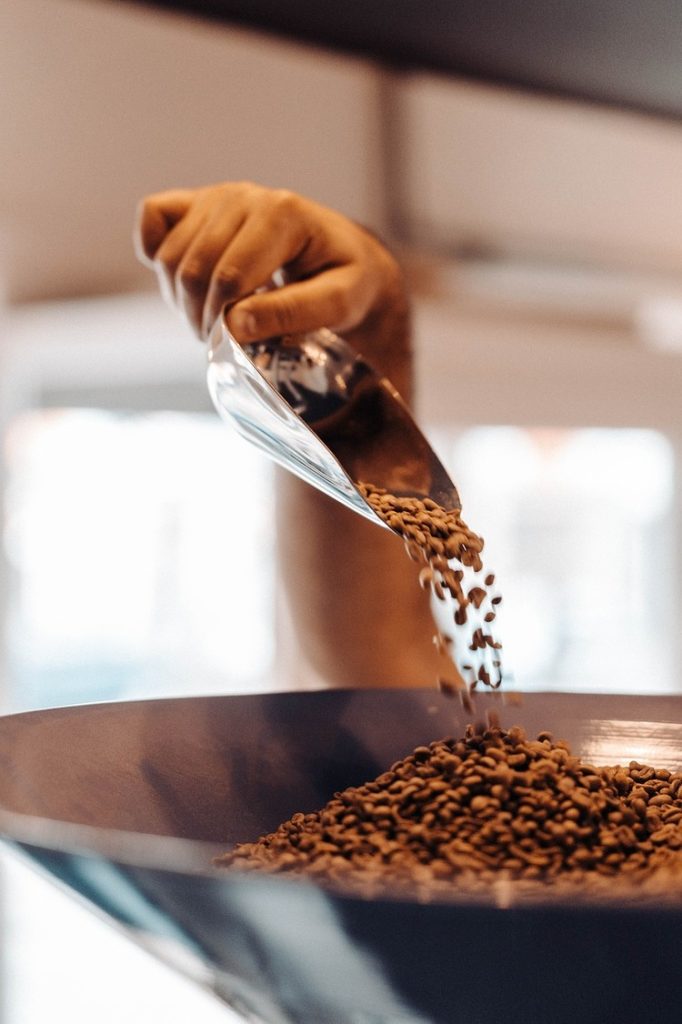
Understanding Green Coffee Beans
Green coffee beans are the raw, unroasted seeds of the Coffea plant. These beans play a crucial role in determining your coffee’s overall taste and quality.
High-quality beans are essential for producing great coffee, so it’s always crucial for specialists and roasters to source beans from reputable suppliers. Green coffee beans come in various shapes, sizes, and colors, depending on the plant variety. This diversity in appearance can impact the flavor profile and roasting process.
When selecting green coffee beans, paying attention to the moisture content is essential. Ideal moisture levels should typically range from 10% to 12%. If the beans have too much moisture, they may not roast properly and will likely produce an inferior taste. Conversely, if the beans are too dry, they can become brittle and difficult to roast.
Additionally, the density of the beans affects the roasting process. Denser beans have a more extended roast time and often have more complex flavors when roasted. On the other hand, less dense beans tend to roast faster and have a more straightforward taste profile.
If you want to learn more about coffee in general and the process coffee cherries go through to become green coffee beans, check out these articles:
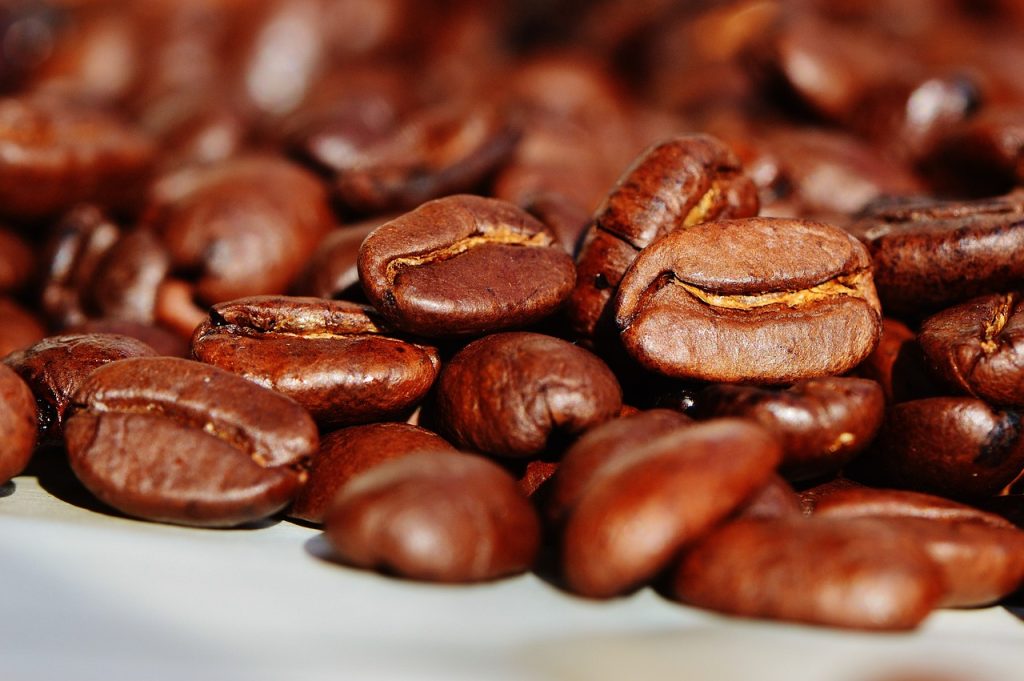
Coffee Roasting Stages
Drying Stage
During the drying stage, coffee beans will lose significant moisture. This phase usually lasts for the first few minutes of roasting, depending on the roasting method and equipment. The beans will turn from green to yellowish as they dry, and a grassy smell is palpable in the air. It’s critical to ensure that the drying process is consistent, as it can lead to uneven roasting and impact the final taste.
Browning Stage
Next comes the browning stage, also known as the Maillard reaction. This is where beans start to develop their distinct coffee aroma. Beans will turn from yellow to light brown, and the production of sugars and amino acids quicks in. This chemical reaction contributes to the complex flavors and aromas of coffee. Specialists pay close attention to the smell and appearance of the beans to determine the desired roast level.
Development Stage
Finally, the development stage is where the magic happens. The beans will darken and expand in size due to the release of carbon dioxide. During this phase, water and oils inside the beans heat up, causing the beans to crack and indicating the roast level. Development time varies depending on the desired roast level, with shorter times for lighter roasts and longer for darker roasts.
Temperature and Time Management
When roasting coffee, it’s crucial to manage temperature and time to achieve the perfect roast carefully. Coffee roasters need to maintain control over the entire process, from the initial charge temperature to monitoring the bean temperature throughout the roast.
Roasters start by selecting an appropriate charge temperature. This is the temperature at which the green coffee beans are introduced into the roster. The charge temperature can significantly impact the total roast time and the flavor development of the beans. A higher charge temperature usually results in a shorter roast time, while a lower charge temperature lengthens the roast time.
Throughout the roast, the bean temperature is closely monitored. A reliable thermometer is used to track the temperature changes. Attention is paid to the rate of rise (RoR), the speed at which the temperature increases. An ideal RoR should be gradual – too fast, and your beans may scorch; too slow, and the beans might be baked or flat in flavor.
Managing heat levels is essential, as it can significantly affect the chemical reactions within the beans. Heat levels can be manipulated by adjusting the airflow and the gas pressure in the roaster.
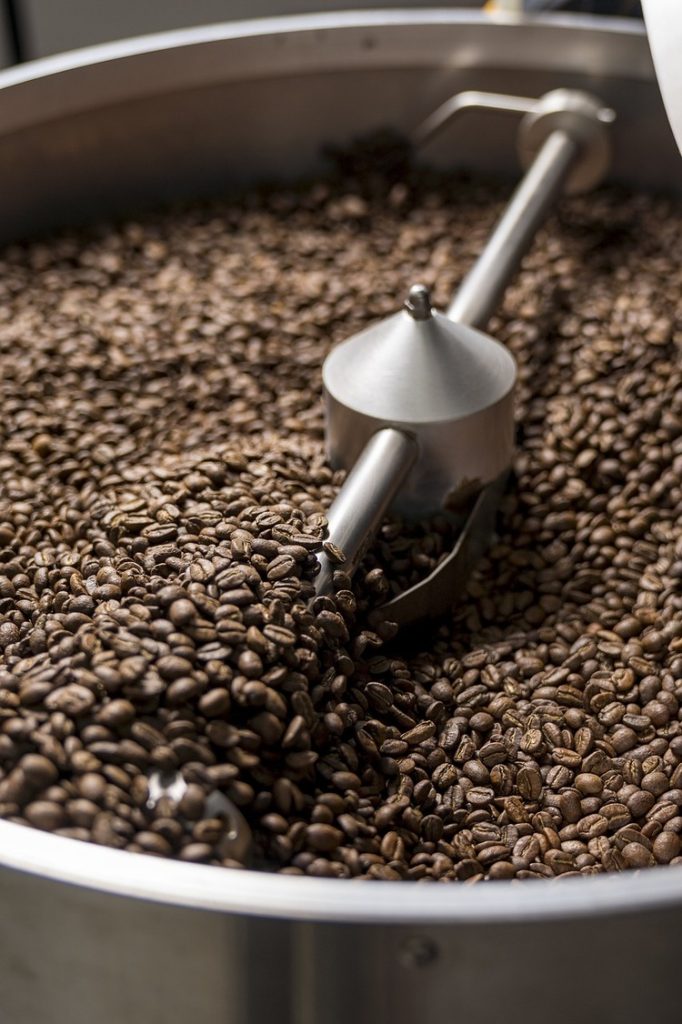
Coffee Roasting Levels
This section will discuss the three primary roasting levels: Light, Medium, and Dark Roast.
Light Roast
A light roast should be your choice when you prefer a coffee with vibrant acidity and fruity notes. This roast degree retains much of the original flavor of the coffee beans, allowing you to appreciate their natural character. Some typical light roast beans are City Roast or Cinnamon Roast.
As a light roast enthusiast, you can expect:
- Bright acidity
- Light body
- Complex and delicate flavors
- Pronounced fruity and floral notes
- Beans have a light brown color, with no oil on the surface
Medium Roast
If you enjoy a well-balanced cup with a bit more body, medium roast is what you’re looking for. This roast level brings out the sweetness of the beans while still retaining some of the original flavors. Known as City+ Roast or American Roast, it’s the most popular choice in the United States.
With a medium roast, you can savor:
- Balanced acidity and body
- Pronounced sweetness
- Subtle notes of chocolate or caramel
- Beans have a medium brown color, again with no oil on the surface
Dark Roast
For those who appreciate a bold, roasty, and full-bodied cup, dark roast is the perfect category. At this roast level, the natural flavors of the coffee beans take a back seat to the roasting process itself. Common dark roast beans include French Roast, Italian Roast, and Espresso Roast.
When you choose a dark roast, you’ll experience:
- Low acidity
- Heavy body
- Bittersweet, roasty flavor
- Beans have a dark brown color, with an oily surface

Coffee Roasting Stages: First and Second Crack
When coffee is roasted, there are two significant milestones to observe: the first crack and the second crack.
The first crack happens due to the internal pressure generated within the bean as the temperature increases. When the humidity inside the bean turns into steam, the pressure creates a “pop” sound similar to popcorn popping. This indicates that the beans have reached the first roasting stage, the first crack. A light to medium roast is observed at this stage, with brighter and sweeter flavors.
Past the first crack, the beans will get darker, and oil will appear on the surface. The second crack occurs when the cellular structure of the bean starts breaking down. This release of pressure results in a more audible and distinct cracking sound. The second crack signifies a medium to dark roast, which produces a more intense, rich flavor and a heavier body.
Keep in mind that during these cracks, there are a few things to consider:
- The usual temperature range for the first crack is between 380°F and 410°F
- The second crack typically takes place between 435°F and 455°F
- The duration between the first and second crack varies depending on the type of beans, batch size, and roasting equipment.
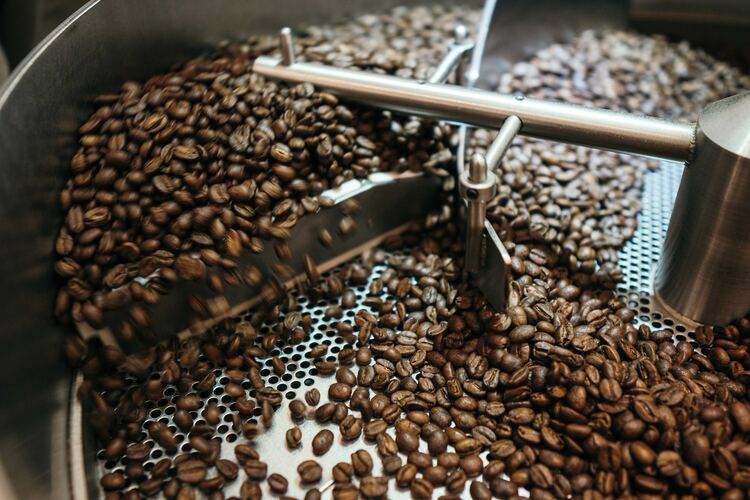
Coffee Roasting Stages: Chemical Reactions
During the coffee roasting process, there are various changes in the beans. A key aspect of this transformation involves chemical reactions. Let’s explore the two main reactions that contribute to flavor and aroma development in your roasted coffee beans.
The Maillard Reaction is a crucial reaction between amino acids and reducing sugars. As the beans heat up, this reaction creates various compounds responsible for the brown color and the complex flavors you love in your coffee. It’s important to note that the Maillard reaction isn’t unique to coffee roasting – it’s also present in the browning of bread, cooking meat, and other instances where heat is applied to food.
Caramelization is another essential reaction that takes place during coffee roasting. When the temperature increases, sugars in the beans begin to break down, releasing volatile molecules. These molecules produce a wide range of flavors that contribute to your coffee’s overall taste and aroma. Caramelization mainly impacts the sweetness, bitterness, and acidity of the beans.
In addition to the Maillard reaction and caramelization, various organic acids, such as acetic, malic, and citric acids, are present in coffee. These acids are responsible for the bean’s pH level and affect the perceived acidity and flavor of the brewed coffee. The roasting process alters the ratio and concentration of these acids, bringing balance to the coffee’s flavor profile.
Flavor Development
As coffee roasts, various flavor development stages influence what you’ll taste in your cup. These stages affect taste, aroma, acidity, balance, body, sweetness, bitterness, chocolate notes, and other fragrant elements.
During the early stages of roasting, coffee beans will lose some of their natural moisture content, resulting in a more concentrated flavor. At the same time, coffee beans develop acidity and a more pronounced brightness. This stage enhances the fruity and floral notes in your coffee.
As the roast progresses, caramelization occurs, which is the Maillard reaction between amino acids and reducing sugars. This reaction intensifies the sweetness and body of the coffee. At this point, aromatic compounds, such as vanillin, with subtle notes of chocolate and caramel, are released.
Furthermore, the development of the roast impacts bitterness. While moderate bitterness is often desired for a well-balanced cup, over-roasting can lead to excessive bitterness. It’s essential to strike a balance in your roast to highlight pleasant bitterness without it becoming overpowering.
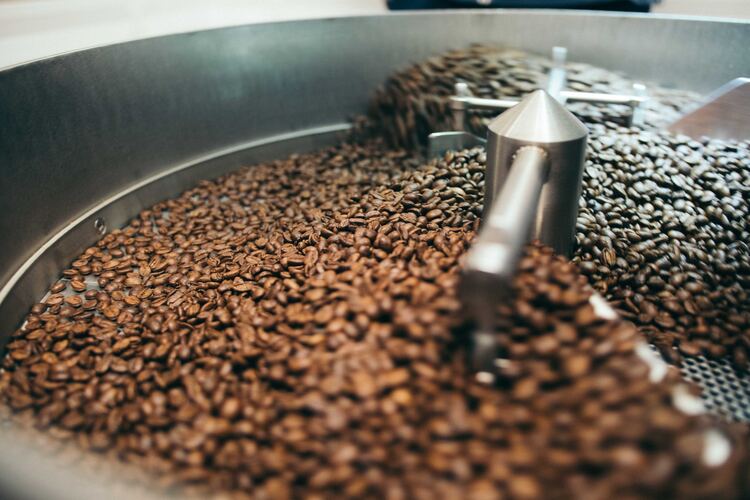
Coffee Roasting Profiles
Roasting coffee is both an art and a science; mastering the roast profile is crucial to the overall experience. A roast profile is a term used to describe the temperature, airflow, and time settings during the coffee roasting process that ultimately affect the taste and aroma of coffee.
In recent years, technology has played a significant role in coffee roasting. One such remarkable advancement is introducing software to assist with roast profiling. These cutting-edge applications make it easier for you to monitor and make precise adjustments in real-time throughout the roasting process.
By harnessing the power of roast profiling software, roasters can record and store roast data such as temperature, time, and roasting curves. This allows for easy analysis and comparison of the results of different roasts, helping to develop preferred roast profiles.
Coffee Roasting Stages: Equipment
In this section, we will learn about the different types of roasters and essential factors to consider when selecting roasting equipment.
Drum roasters are a popular choice for many specialists, as they provide even and consistent roasts. These roasters consist of a rotating steel or cast iron drum that holds the coffee beans. As the drum spins, heated air (usually generated by gas or electricity) circulates the beans, roasting them to perfection. Some key features of drum roasters include:
- Batch or continuous roasting options
- Wide range of capacities, from small, home-use roasters to large, commercial-grade machines
- Adjustable drum speed and temperature controls, allowing for fine-tuning of the roast
- Typically quieter operation compared to other roasters
Other types of roasting equipment include:
- Fluid bed roasters: Also known as air roasters, these machines use a column of hot air to agitate and roast coffee beans. They’re generally faster and more energy-efficient than drum roasters but may produce less even roasts for larger batches.
- Hybrid roasters: These machines combine elements of both drum and fluid bed roasters, offering the advantages of both.
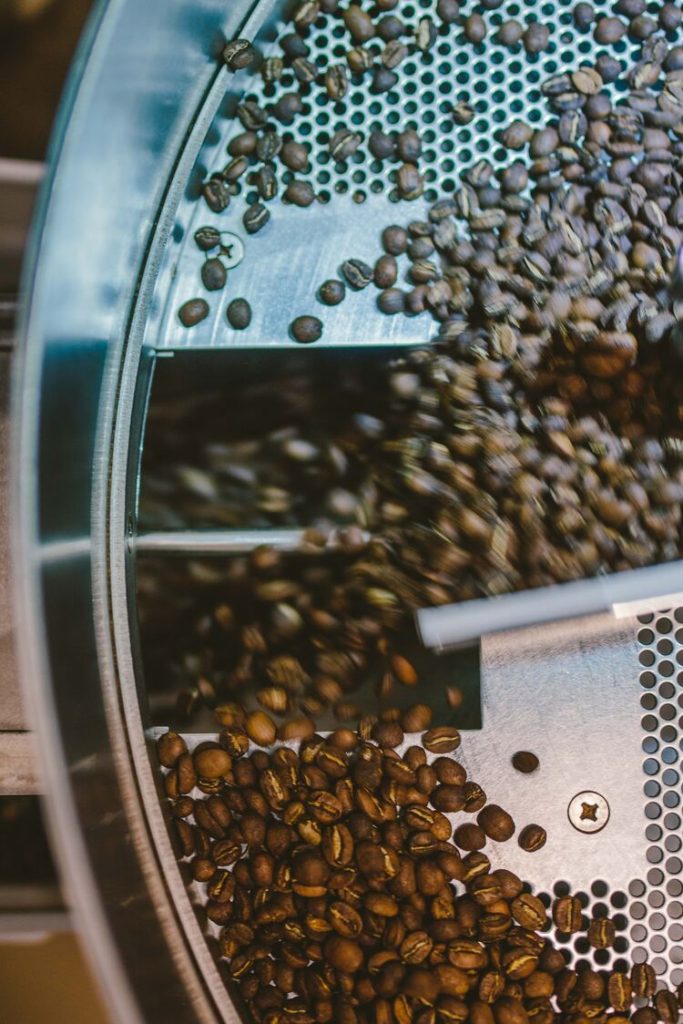
Post-Roasting Processes
After coffee beans complete the roasting process, it’s essential to manage the post-roasting processes properly. Cooling, storing, grinding, and brewing are all-important stages to ensure the best coffee experience.
Cooling: The first step is cooling freshly roasted beans. Quickly and evenly cooling the beans is crucial to preserve the flavors and aromas. There are two standard cooling methods: air cooling and water quenching. Air cooling is preferred as it cools the beans slowly using natural air without adding moisture, preserving bean quality.
Storing: Next, beans are stored in an airtight container, preferably with a one-way valve. This helps release CO2 while keeping oxygen out. The container should also be opaque to protect from light exposure. Beans should be stored in a cool, dry place but not in the refrigerator, as moisture can damage them.
Grinding: Grinding right before brewing is highly recommended for maximum flavor. Choose a grinder like a burr grinder, offering control over grind size. There are two grind types:
- Coarse grind: Suitable for French press, cold brew, or percolators.
- Fine grind: Espresso machines require a fine grind for optimal extraction.
Brewing: There are various brewing methods to suit taste preferences, such as drip coffee, pour-over, French press, Aeropress, Moka pot, or espresso machine. Experiment with each to find your preferred method.
- Espresso: A favorite choice for coffee enthusiasts, espresso is a concentrated coffee drink extracted by forcing hot water through finely ground, compacted coffee. It’s the base for many popular drinks like cappuccino, latte, and Americano.

Frequently Asked Questions
What is the ideal temperature for roasting coffee beans?
The ideal temperature for roasting coffee beans varies depending on the desired roast level. Generally, it ranges from 370°F (190°C) to 540°F (280°C). Light roasts typically require lower temperatures, while dark roasts call for higher ones. It’s essential to monitor the temperature closely to achieve your preferred roast.
How long should coffee beans be roasted?
The roasting time varies based on the desired roast level and roasting equipment. Light roasts may take only 9-11 minutes, while medium roasts typically last 12-15 minutes, and dark roasts can range from 16-20 minutes.
What are the key phases in coffee roasting?
There are three key phases in coffee roasting: drying, browning, and developing phase.
- Drying: As the beans heat, moisture evaporates, and the beans turn a pale yellow. The beans will also start to smell grassy.
- Browning: Beans turn brown as the sugars and amino acids react through the Maillard reaction. At this point, you’ll hear a cracking sound, which marks the beginning of the development phase.
- Developing phase: The beans continue to darken and crack as they develop their roasted flavors. The longer they roast, the more developed and robust the flavor becomes.
Which techniques are commonly used in professional coffee roasting?
Two primary techniques in professional coffee roasting are drum and air roasting. Drum roasting uses a rotating drum to mix and heat the beans, while air roasting employs hot air to lift and roast the beans. Both methods have their advantages and offer unique flavor profiles.
How do roast levels affect coffee flavor?
Roast levels significantly impact coffee flavor, from light-bodied and bright acidity in lighter roasts to fuller-bodied and lower acidity in darker roasts.
- Light roasts: Preserve the beans’ origin flavors, exhibit fruity and floral notes, and have a higher acidity.
- Medium roasts: Combine origin flavors and roast character, showcasing nutty and chocolatey notes.
- Dark roasts: Overpower origin flavors with bold, smoky, and bitter taste profiles and have lower acidity.
What are some indicators that coffee beans are appropriately roasted?
Beans undergo a few key changes during roasting, providing visual and auditory cues to gauge doneness:
- Color: Beans transition from green to yellow, then brown, indicating the browning phase and, finally, the development of roasted flavors.
- Size: Beans will increase in size due to the release of carbon dioxide and the vaporization of moisture.
- Surface texture: As the beans roast, the surface becomes smoother, and in darker roasts, oils start to emerge.
- First and second cracks: The beans will emit a distinct cracking sound during two roast stages, signifying essential milestones.
- Aroma: The smell of the beans changes from grassy to more aromatic and roasted-like as the process progresses.
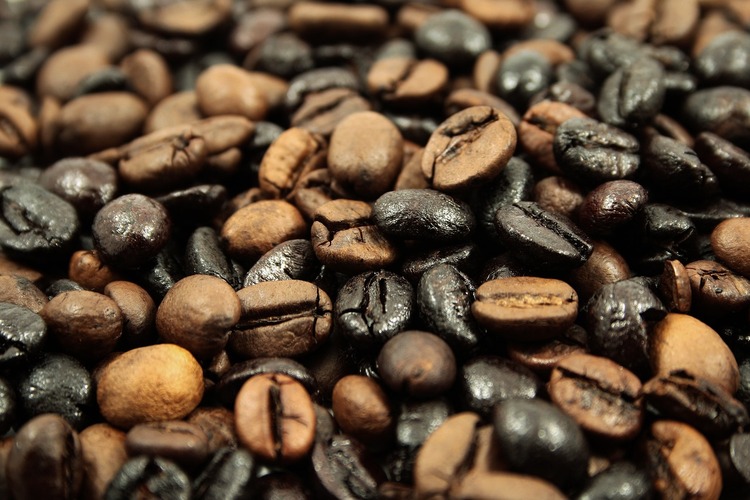
If you have read other articles on this site, you know I am super into the history and processing of coffee. This coffee roasting stages article has been one of the most interesting (and comprehensive) I have written regarding these topics. I hope you have enjoyed it.
How well-versed are you in the coffee roasting stages?